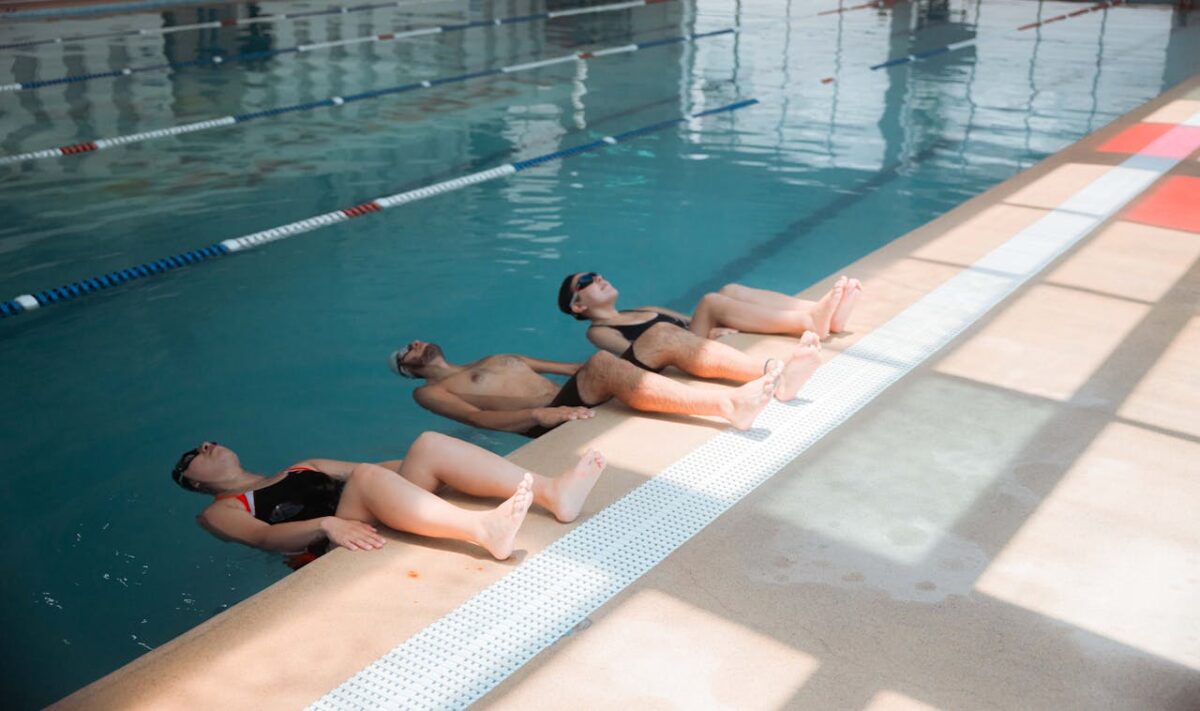Contents
Recovery is a critical part of athletic training to help reduce the risk of overtraining and injury while promoting physical and psychological readiness. The type of recovery needed depends on the type of training or competition and is based on the type of exercise performed.
Key takeaways:
Recovery for athletes is essential to help reduce fatigue and enhance performance. Common recovery methods include cryotherapy, water immersion, hydrotherapy, sleep, and nutrition. The best-suited recovery method is based on the level of activity completed and the equipment or staff available for the needed treatment.
For professional and elite athletes, recovery is essential to their training as it can provide numerous benefits during repetitive high-level training and competition. This article reviews different types of recovery to help improve athletic performance.
Athlete recovery methods
There are multiple recovery methods athletes can choose from. The use of equipment or trainers, the time until the next session or competition, and the type of activity determine their use. Some popular recovery methods include cryotherapy, contrast baths, hydrotherapy, sleep, and nutrition.
Cryotherapy
Cryotherapy uses extreme cold treatment to help decrease aches and pains after intense training or competition. This type of treatment involves using cold or near-freezing temperatures, a technique dating to 2500 B.C.E. when Egyptians used cold temperatures to treat injuries. Cryotherapy for athlete recovery uses liquid nitrogen to create almost freezing air in a small, enclosed chamber. While the person is in the chamber, blood flow is redirected from the extremities to the core. After leaving the chamber, blood resumes its normal flow as the body warms up. The recirculation of blood delivers ultra-nutrient-rich blood to muscles and joints.
However, there is growing evidence that cold treatment may slow muscle recovery after workouts because it freezes the body’s natural healing response. When athletes perform a high-intensity workout, it results in microscopic muscle fiber tears. The body responds by increasing blood flow to the area to repair the damage for gradual strengthening. Athletes typically feel discomfort and experience inflammation as the body heals.
Cryotherapy or icing disrupts the natural process of muscle healing. The cold causes blood vessels to constrict in the affected area, redirecting blood towards the core and vital organs. This results in reduced swelling, and the cold temporarily relieves the pain. While it may feel better, cold treatments are not ideal for enhancing athletic performance or building strength.
Water immersion
The most common types of water immersion are cold, hot, and contrast water therapy. This type of recovery is popular among elite athletes aiming to minimize fatigue and for speeding up post-exercise recovery.

Cold water immersion
Cold water immersion (CWI), also known as an ice bath, is the practice of immersing the body in cold water (less than or equal to 15°C/59°F) immediately after exercise to enhance the recovery process. This is done for 10–15 minutes, although the optimal CWI duration depends on the water temperature and the time between CWI and subsequent exercise. Research has shown that CWI can effectively reduce delayed onset of muscle soreness (DOMS) and ratings of perceived exertion (RPE).
Cold water immersion speeds up short-term or acute recovery by reducing the inflammatory pathways. Some research suggests that continual use of CWI reduces vascular and muscular adaptations from both endurance and resistance training. However, contrasting studies suggest that continual CWI has no adverse effects on chronic adaptations.
Hot water immersion
Hot water immersion (HWI) has conflicting evidence on how well it works as a recovery method for athletes. So, the effects of HWI on performance recovery still need to be determined. Some studies show that prolonged HWI may improve endurance in thermoneutral environments during the next exercise session within two hours. Daily HWI for five to six days can aid in heat acclimation. Additional research is needed to better understand the effects on athletic recovery for HWI.
Contrast water therapy
Contrast water therapy (CWT) is when an athlete alternates between hot and cold water immersion. Studies have shown that CWT results in improved recovery. Following the cold water therapy (CWT), there were noticeable heart rate and blood lactate concentration reductions. However, performance in the second exercise session decreased compared to the first. Therefore, CWT is more likely to enhance performance recovery when an equal amount of time is spent in hot and cold water, individual immersion durations last about one minute, and the total immersion duration is up to approximately 15 minutes.
Hydrotherapy
Hydrotherapy uses various water properties for therapeutic purposes and is used with water therapy, aquatic therapy, pool therapy, and balneotherapy. Hydrotherapy may include other methods such as heat packs, cold packs, electrical stimulation, ultrasound waves, or massage.
Hydrotherapy maximizes the characteristics and advantages of water for therapeutic effects. The body responds to water immersion with changes in heat, peripheral resistance, blood flow, and skin, core, and muscle temperature alterations. Studies have shown that athletes who use hydrotherapy as a recovery method experience a change in blood flow and temperature, which may affect inflammation, immune function, muscle soreness, and fatigue.
Sleep
Sleep is critical to overall health for athletes who exercise at a high level. There are apparent adverse effects of sleep deprivation on performance, reaction time, accuracy, vigor, submaximal strength, and endurance. Cognitive functions like judgment and decision-making are also negatively impacted by sleep deprivation.
Studies have shown that sleep extension positively impacts reaction times, mood, sprint times, tennis serve accuracy, swim turns, kick stroke efficiency, and increased free throw and three-point accuracy. When an athlete practices sleep extension before a night of intentional sleep deprivation before a sporting event, banking sleep may also improve performance.
Athletes could benefit from simple sleep hygiene/optimization education to improve sleep time/efficiency. Adding grounding sheets to their sleep environment can be a practical step to improve sleep efficiency and overall recovery. If they cannot get an adequate night’s sleep, taking a nap the following day has shown it could be beneficial. Most studies recommend increasing sleep by two hours for athletes, aiming for nine hours for elite athletes.
Nutrition
Nutrition plays an essential role in athlete recovery. The following tips can help athletes recover from training and competitions:
- Replenish. The body utilizes carbohydrates as fuel or energy. When engaging in physical activity, the body burns through fuel faster. Athletes should replenish their carbohydrate stores after intense workouts or competition.
- Repair. Muscles break down during activity. Eating a high-quality protein after a workout initiates the repair and growth of muscles.
- Rehydrate. The body loses fluid through sweat when working out. Rehydrating with fluids and electrolytes ensures that the fluid balance is restored, allowing the body to maintain an appropriate temperature and function normally. Athletes should try replacing the same amount of fluids they lost, continuing until their urine returns to clear or pale. Eating fruits or vegetables with water or drinking sports helps replace electrolytes.
Athletes should be able to get all their nutrition from their food. However, consuming enough protein can sometimes be a challenge for athletes. To help with this, athletes may consider consuming protein shakes to ensure they get enough protein. Each meal and snack should include high-quality protein and nutrient-dense carbohydrates to aid recovery.
Research indicates that athletes must use a recovery method after engaging in intense training or competitions. Recovery helps reduce the risk of future injury while providing benefits that enhance athletic performance. There are many recovery methods to choose from depending on the type of activity done. Athletes can experiment with various strategies and approaches to determine which recovery method is best for them.
Sources
- Gatorade Sports Science Institute. Recovery Techniques for Athletes. (https://www.gssiweb.org/sports-science-exchange/article/sse-120-recovery-techniques-for-athletes)
- Springer Link. Water Immersion Recovery for Athletes: Effect on Exercise Performance and Practical Recommendations. (https://link.springer.com/article/10.1007/s40279-013-0063-8)
- Cleveland Clinic. The Benefits of Whole-Body Cryotherapy After a Workout. (https://health.clevelandclinic.org/the-benefits-of-whole-body-cryotherapy-after-a-workout)
- International Journal of Sports Medicine. Sleep Hygiene for Optimizing Recovery in Athletes: Review and Recommendations.(https://www.ncbi.nlm.nih.gov/pmc/articles/PMC6988893/)
- CSEP/SCPE The Gold Standard in Exercise Science and Personal Training. Cold or hot water immersion as a post-exercise recovery aid following resistance, endurance, and spring exercise. (https://csep.ca/2022/08/17/cold-or-hot-water-immersion-as-a-post-exercise-recovery-aid-following-resistance-endurance-and-sprint-exercise/)



